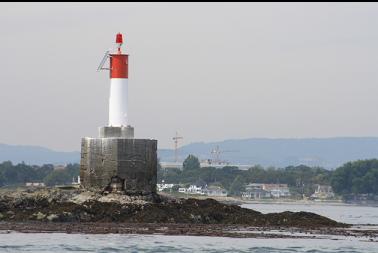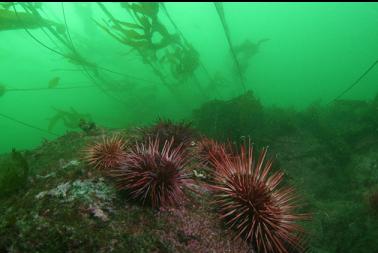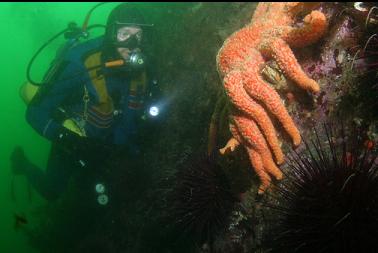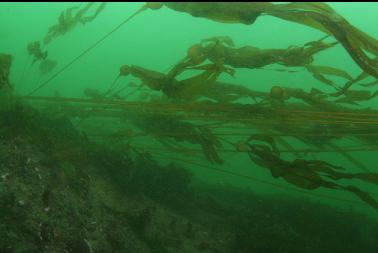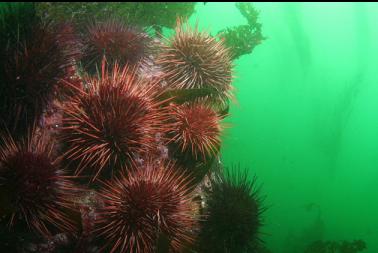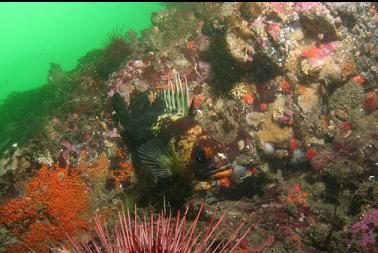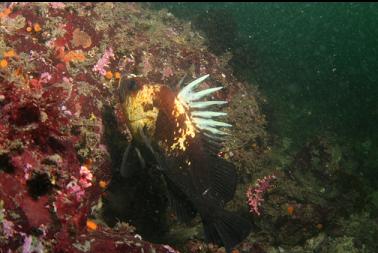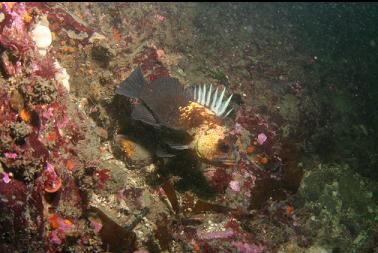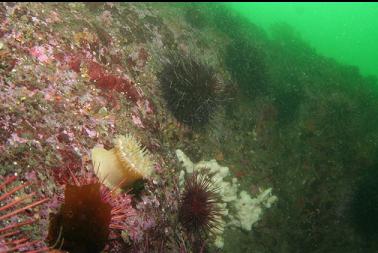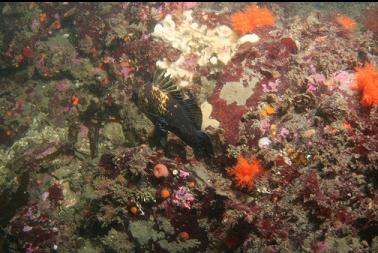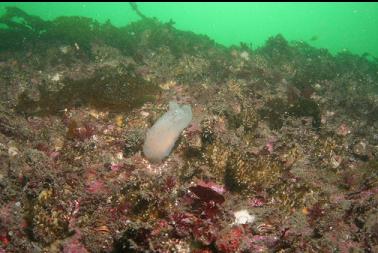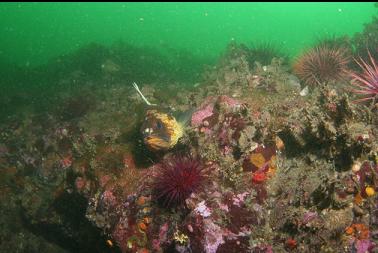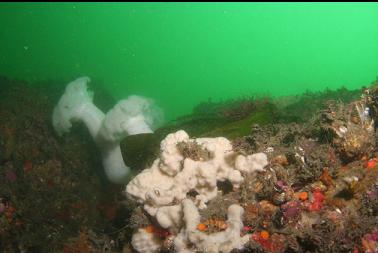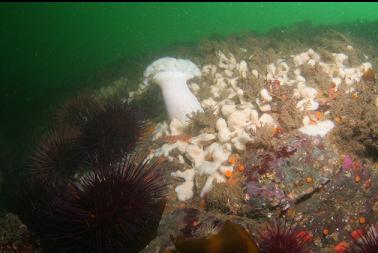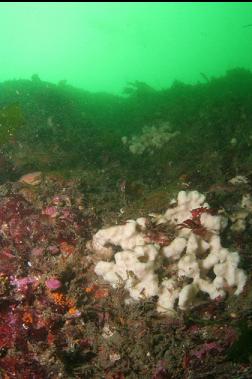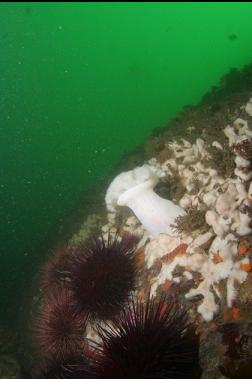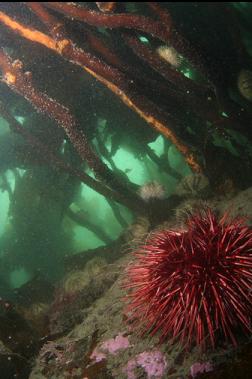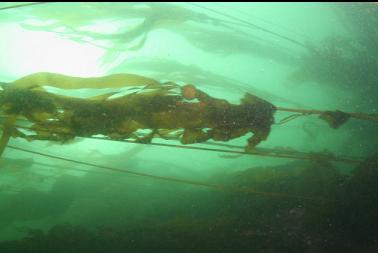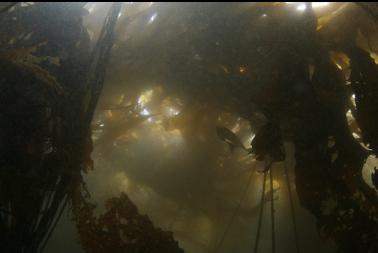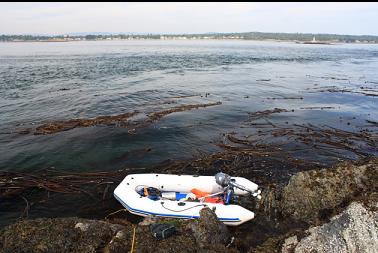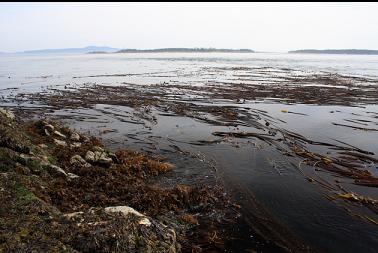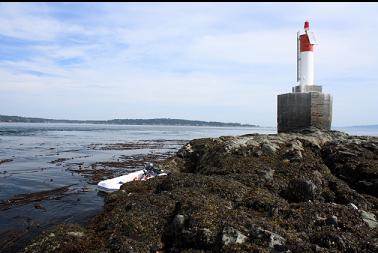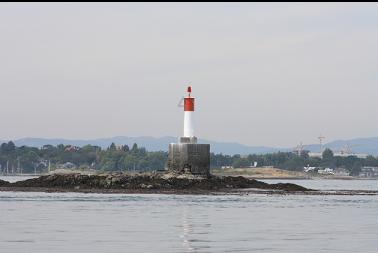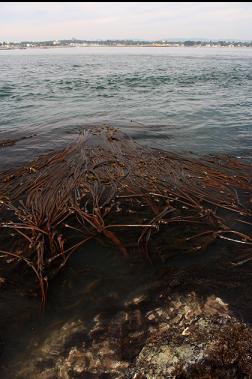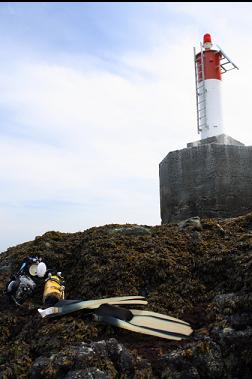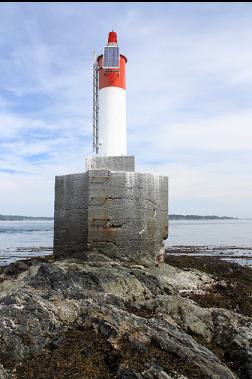There are several shallow reefs marked with navigational markers or lights between Oak Bay and the Chain Islets. Lewis Reef is the one closest to the Chain Islets. The chart promises 3 knots of current around the reef and there are usually obvious tide rips. At high tide, all that's visible is the navigational light on it's cement base, but when I went (July 5, 2009), it was low tide and the top of the reef was exposed. I chose to use the Baynes Channel current correction (Race Passage -15 minutes) instead of the Current Atlas or the Tide View current program. The Baynes Channel slack was about 2 hours later than the other two. I showed up right on the published slack so in my opinion, I was already a bit too late. My faith in the Canadian Hydrographic Service was justified since I didn't see the slightest ripple of current around the kelp beds surrounding the reef. I had to anchor right next to the exposed reef since it drops down almost immediately. I was on the side facing Oak Bay, since that's where the chart shows the steepest, deepest drop. As I was standing in the water next to my boat putting on my stuff, I noticed that the channel between the reef and Oak Bay (Mayor Channel) was a major marine traffic area. A tug and barge plowed through, followed by 2 large luxury yachts. I had to wince as the wake rushed up and smacked my inflatable boat against the barnacle-covered reef. This wasn't the best spot for an anchorage, but I was starting to notice wisps of current so I figured I'd better dive while I could. I swam down through the thick bull kelp forest and down a wall. Visibility was only 10-15 feet and the current was starting to increase. I swam against it along the base of the wall at around 50 feet deep. I was a bit disappointed by the marine life. I was expecting forests of plumose anemones, but the rocks seemed mostly bare from a distance. Up close, I could see burrowing cucumbers, cup corals, cemented tube worm colonies, encrusting sponges, various tunicates and even some branching hydrocorals. Some areas were covered with red urchins. At the base of the wall , broken rock stretched out into the channel. There were several quillback rockfish hanging around. They seemed to be the most common fish here, although I also saw a couple of copper rockfish and kelp greenlings. The current was really ripping now and I figured I'd better get back to the boat. I flew past the wall and noticed some clumps of plumose anemones, lots of opalescent nudibranchs and a mosshead warbonnet. I forced my way up through the kelp and managed to surface a few feet from the boat. At 17 minutes, this had to be the shortest dive I've done in a long time. This place doesn't compare to 10-Mile Point, but there was a decent amount of life. I'll have to come back when the current and visibility are better.


